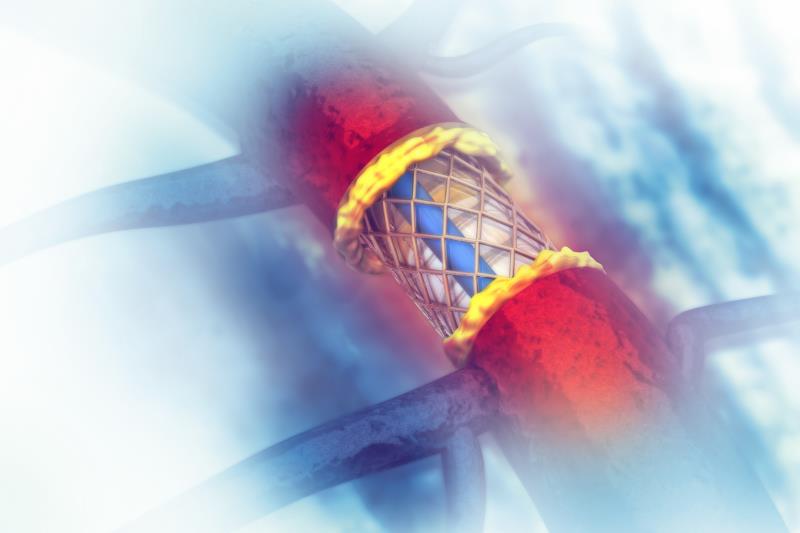
Percutaneous coronary intervention (PCI) was inferior to the standard treatment regimen, coronary artery bypass grafting (CABG), for revascularization of left main coronary artery disease (CAD), according to the updated outcomes of the NOBLE* trial, which do not appear to support current clinical guidelines**.
The 3-year NOBLE findings have already reflected the inferiority of PCI to CABG, noted the researchers. “Having reached the predefined total number of required events, reliable conclusions can now be drawn.”
A total of 1,201 participants from 36 hospitals in northern Europe were randomized 1:1 to undergo either PCI or CABG. After a median follow up of 4.9 years, CABG was superior to PCI, given the substantially higher incidence of the primary endpoint of MACCE*** with PCI vs CABG (28 percent vs 19 percent; hazard ratio [HR], 1.58, 95 percent confidence interval [CI], 1.24–2.01; p=0.0002). [Lancet 2020;395:191-199]
Patients with low SYNTAX score (≤22; denoting an overall lower presence of multivessel disease) are not particularly suitable for PCI as reflected by the nearly doubled MACCE rate with PCI vs CABG (27 percent vs 14 percent; HR, 2.05, 95 percent CI, 1.41–2.98; p=0.0001).
Despite similar all-cause mortality rates (9 percent for both; HR, 1.08, 95 percent CI, 0.74–1.59; p=0.68), PCI recipients had higher rates of non-procedural myocardial infarction (MI; 8 percent vs 3 percent; HR, 2.99, 95 percent CI, 1.66–5.39; p=0.0002) and total repeat revascularization (17 percent vs 10 percent; HR, 1.73, 95 percent CI, 1.25–2.40; p=0.0009) than CABG recipients.
However, as the current trial was not powered to evaluate mortality, the researchers underlined the need for further probing to validate the similar death rates between the two revascularization strategies.
The higher rates of non-procedural MI and repeat revascularization following PCI should also not be overlooked, they added, given the high morbidity associated with MI as well as some repeat revascularization cases that were done via CABG despite its disadvantages (ie, longer hospitalization, higher risk of reoperation and stroke, and more transfusions). [Lancet 2016;388:2743-2752; N Engl J Med 2016;375:2223-2235; J Am Coll Cardiol 2018;72:386-398]
Despite the inferiority of PCI to CABG, it would be worth considering the similar mortality rates between the two regimens plus the CABG-associated risks, noted the researchers. “[These factors] might still justify offering PCI to patients who are eligible for both treatment options.”
A comprehensive evaluation will thus be essential to assess patients’ suitability for stenting or grafting and the overall surgical risk, they said. “[A]n individualized discussion with the patient on the benefits and risks associated with the two treatments [is warranted] to ensure they are able to provide sufficiently informed consent.”
Of note was the exclusion of clinically unstable subjects which, according to the researchers, may not represent a typical cohort of patients with left main CAD. “[O]ur findings are based on a small subgroup of clinically stable patients with acute coronary syndrome. [Therefore,] inferences should be made with caution and not extrapolated to patients who are clinically unstable.”
“[Nonetheless,] the results might … provide insight into the optimal strategy in revascularization of patients with left main CAD,” said the researchers.